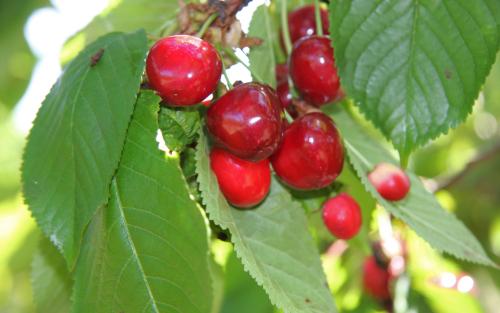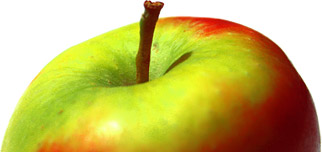
Heart-shaped. Moderately firm, juicy, sweet. Stone semi-free.
Burlat cherry identification images
All images copyright Orange Pippin unless otherwise stated.
USDA identification images for Burlat
The identification paintings in the USDA Pomological Watercolor Collection span the years 1886 to 1942.
Citation: U.S. Department of Agriculture Pomological Watercolor Collection. Rare and Special Collections, National Agricultural Library, Beltsville, MD 20705.
Visitor reviews
Origins
- Species: Prunus avium - Sweet cherry
Identification
- Fruit colour: Red
- Fruit colour: Red - dark
- Flower colour: White
- Leaf colour: Green
- Annual cycle: Deciduous
- Leaf colour - autumn: Green
- Flowering duration: Average (2-3 weeks)
- Flower form: Single flower (5-8 petals)
- Flesh colour: Dark red
- Fruit size: Large
- Fruit shape: Round
- Alleles: 3
- Alleles: 9
Using
- Picking season: Very early
- Keeping (of fruit): 1-3 days
- Flavour quality: Good
- Cropping: Good
- Fruit persistence: Normal ripening
- Food uses: Eating fresh
- Picking month: June
- Wildlife: Attractive to birds
- Picking period: early June
Growing
- Gardening skill: Average
- Flowering group: 2
- Pollinating others: Average
- Vigour: Slightly large
- Bearing regularity: Regular
- Organic culture: Suitable
- Self-fertility: Not self-fertile
- Sunlight: Prefers full sun
- Pruning: Do not prune
- Growth habit: Upright-spreading / Vase
- Cherry universal pollinator: No
- Cherry incompatibility group: 7
Climate
- Climate suitability: Temperate climates
Other qualities
- Disease resistance: Average
- Fruit splitting: Some resistance
- Black knot: Some resistance
Where to buy trees
The following tree nurseries offer Burlat cherry trees for sale:
- Thomas Fruit Trees (EU) France
Burlat cherry trees
Where to buy fresh fruit
No orchards have registered as growing this variety. If you grow this and want to register please go to our Orchard Registration form.

